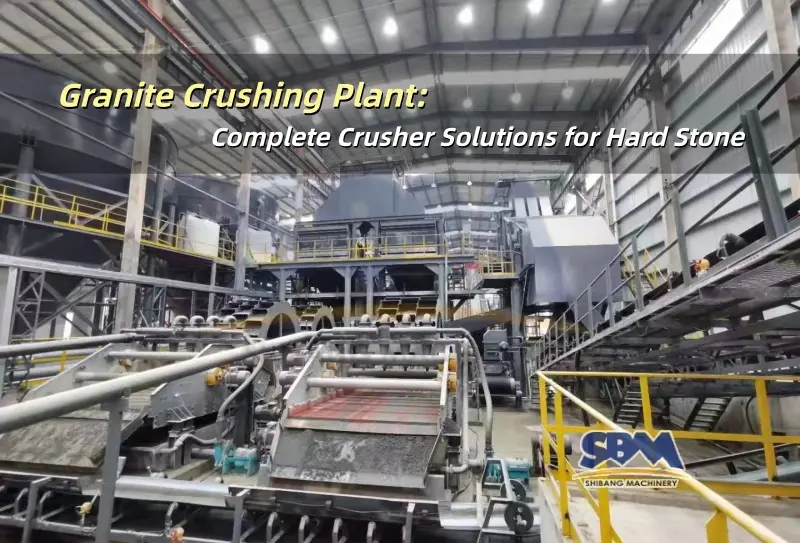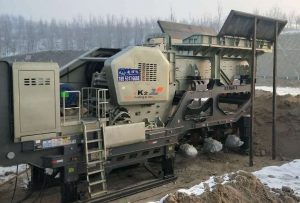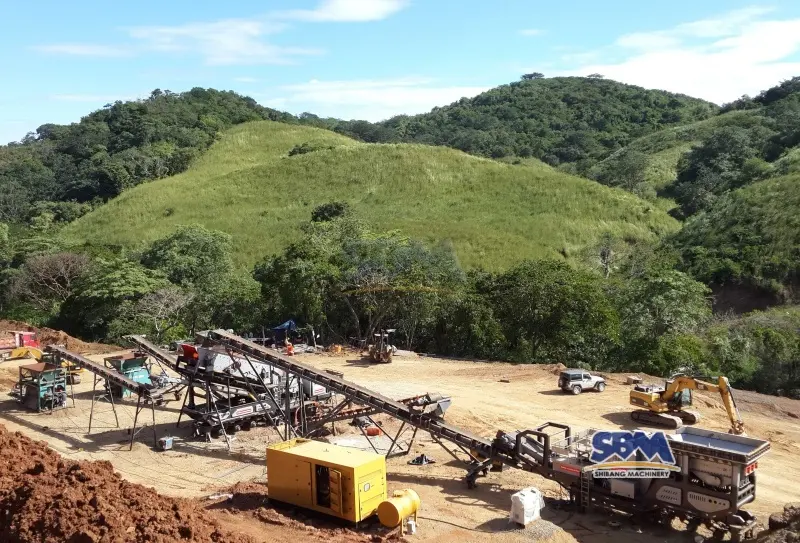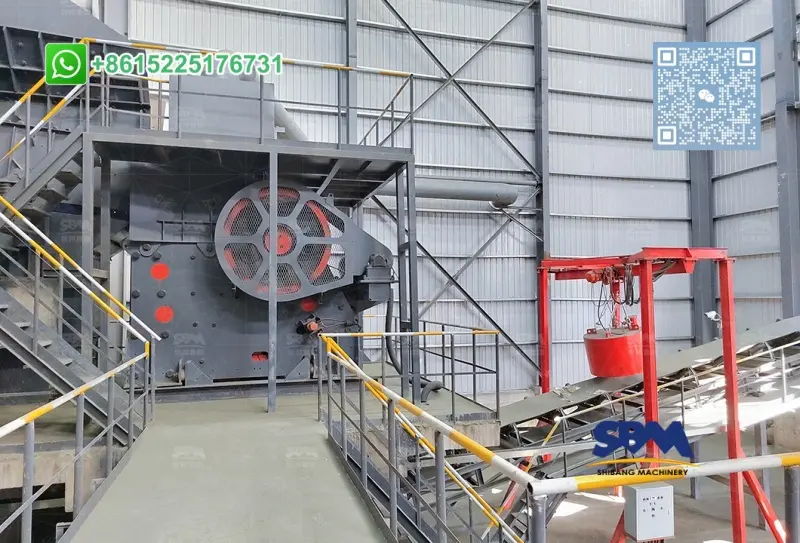Email: [email protected]
The Different Types Of Sand Crusher Machine
Sand crusher machine, often referred to as a sand maker or sand processor, is a tool used to create artificial sand or finely crushed sand from a variety of materials, including rocks, limestone, granite, basalt, river pebbles, etc. Sand and aggregates are produced there and utilized in the construction sector for making concrete, building roads, and other things.
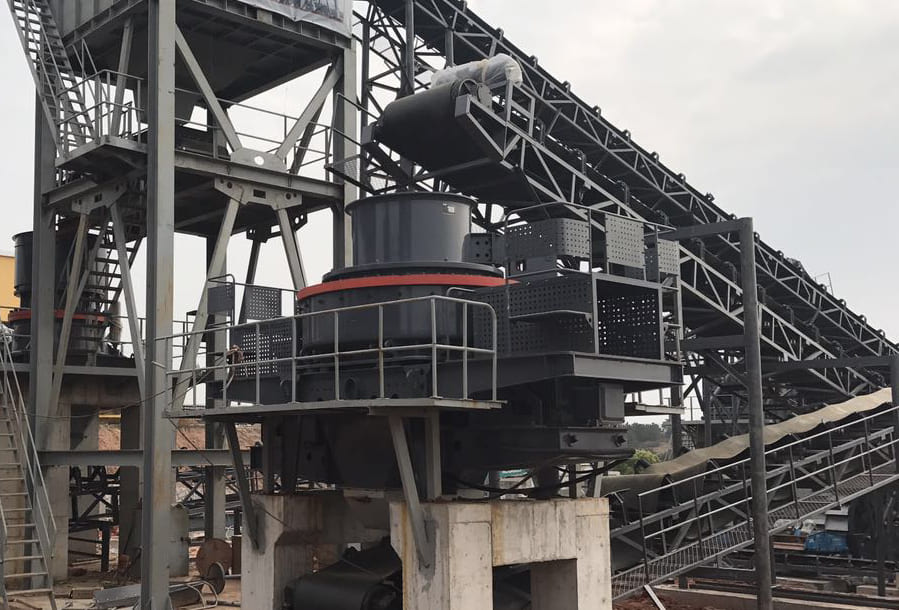
The material is fed into the crushing chamber or cavity of the sand crusher machine, which is made up of a spinning impeller or rotor. The material is propelled against the anvils or curtains lining the crushing chamber by the high-speed spinning of the impeller. The material is broken down into smaller pieces during the impact and collision process, producing sand with the correct particle size and form.
Different configurations of sand crushing equipment are possible, including vertical shaft impact (VSI), horizontal shaft impact (HSI), cone, and jaw crusher. These machines may have changeable rotor speed, chamber layout, and feed size settings, among other options, to customize the size and form of the output particles.
What are the different types of sand crusher machine?
- Vertical Shaft Impact Crusher (VSI): This kind of crusher is frequently used to make synthetic sand and shape aggregates. By using impact and attrition, a high-speed rotor with wear-resistant tips crushes the material. Excellent particle form is provided by VSI crushers, which may be set up to maximize the output of particular gradations.
- Horizontal Shaft Impact Crusher (HSI): Similar to VSI crusher, but using a horizontal shaft to operate, are HSI crushers. They smash the material against anvils or curtains using hammers or blow bars. Softer materials are frequently crushed using HSI crushers, which also have a high reduction ratio.
- Cone Crusher: Cone crushers may be used to produce sand, despite its main usage in the crushing of rocks and ores. They function by compressing the material between a concave and an eccentrically revolving mantle. Cone crushers are ideal for intermediate and tertiary crushing stages and are renowned for their capacity to create cubic-shaped final products.
- Jaw Crusher: Jaw crushers are not frequently utilized to produce sand directly; instead, they are generally employed for the primary crushing of massive rocks. To lower the material’s size prior to processing, they can be used in combination with other sand crushing equipment.
- Combination Crushers: Some devices combine the capabilities of various crusher types. For better shaping capabilities, certain VSI crushers can be fitted with an extra rotor or cascade system.
The purpose of sand crusher machine
- Construction Material Production: Sand and aggregates used in the creation of concrete, paving, and other building materials are produced by sand crusher machines, which are widely employed in the construction sector. The device aids in supplying high-quality sand demand, which is necessary for building projects.
- Shaping and Refining: Machines called sand crushers are used to refine and shape sand particle size. They are able to create sand with the specified particle size and form, guaranteeing that the sand complies with certain specifications for diverse uses. Creating sand that has angular or rounded particles, regular gradations, and less flakiness or elongation are a few examples of this.
- Improving Concrete Quality: Concrete’s quality and workability can be enhanced by using suitably graded and shaped sand produced by a crushing machine. It aids in improving the overall performance, strength, and toughness of concrete constructions.
- Replacement for Natural Sand: Sand crusher machines are used to create artificial sand as a sustainable alternative because to the rising demand for sand and environmental concerns over the over-extraction of natural sand from riverbeds. Utilizing crushing equipment lessens the need for natural sand and conserves precious resources.
- Cost-Effectiveness: Compared to mining for natural sand, using sand crusher machines may produce sand and aggregates more affordably. It enables efficient and regulated manufacturing, lowering the requirement for heavy physical work and the accompanying transportation expenses for natural sand.
How to choose the right sand crusher machine?
- Material Characteristics: Know the properties of the raw material you plan to treat. Think about things like particle size distribution, moisture content, and the degree of abrasiveness and hardness. For the best results, certain materials might need particular kinds of crushing equipment.
- Required Output: Establish the sand’s required output criteria, taking into account the particle size, shape, and gradation. The capacity of various crusher machines to produce various kinds of sand varies. Make sure the equipment you select can fulfill the precise specifications of your project.
- Production Capacity: Calculate the crusher machine’s necessary production capacity. Think about how much sand you have to make in a certain amount of time. To effectively fulfill project deadlines, use a machine that can manage the desired production volume.
- Operational Costs: Take into account the machine’s operational expenses, such as power usage, upkeep, and wear part replacement. Choose a sand crushing device that delivers a performance-to-operational cost ratio that is favorable.
- Machine Configuration: The characteristics and setups of different crusher machines might affect their performance and adaptability. Think about elements like the rotor design, chamber arrangement, movable parameters, and automation potential. The efficiency and quality of sand manufacturing may be impacted by several characteristics.
- Manufacturer Reputation: Select a renowned producer or supplier with a history of producing trustworthy and superior crusher equipment. Look for manufacturers who have a history in the building sector and have received good feedback from clients.
- Support and Service: Think about if the machine has access to technical support after the sale and replacement components. To reduce downtime, it’s critical to select a manufacturer or supplier that offers excellent customer service and guarantees the availability of replacement components.
- Budget: For your investment in a sand crusher machine, set a budget. Take into account both the upfront purchase price and ongoing operating expenses. While it’s crucial to choose a solution that’s affordable, give priority to quality and performance to make sure the device fulfills your needs.
- Safety Considerations: Consider the machine’s safety provisions and safeguards. To safeguard operators and reduce workplace dangers, make sure it conforms with all applicable safety standards and laws.

